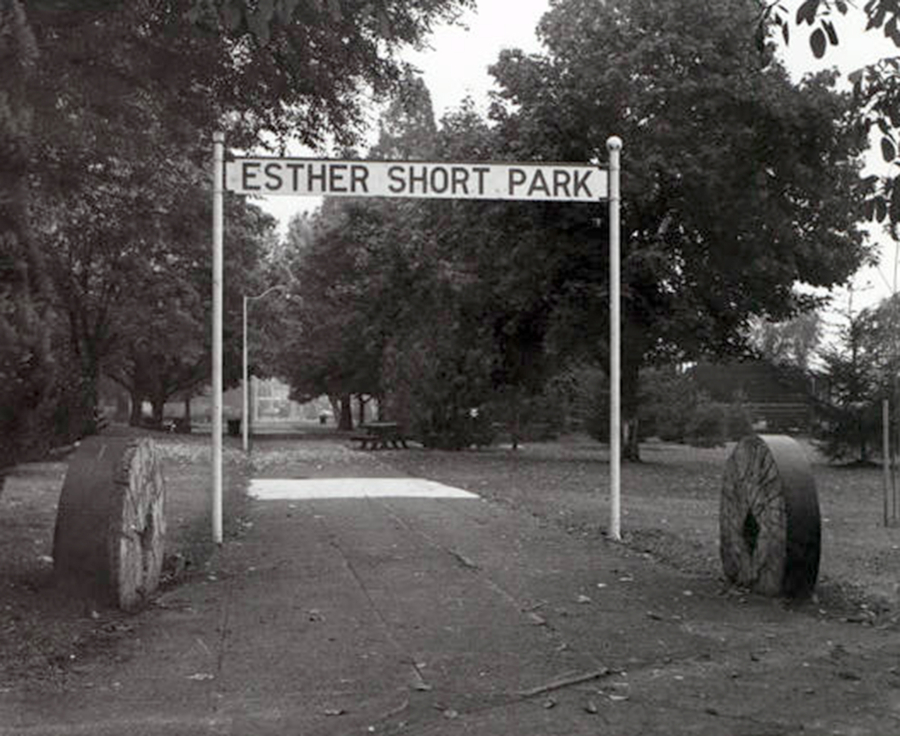As settlements arose in the Pacific Northwest, a sawmill was often a community’s first commercial industry and its second, a gristmill. Together, they made shelter and food possible. Today people using the cliche “a millstone around my neck” to bemoan a burden aren’t aware one weighs a ton or more. Or when they use “grist for the mill,” they may not understand what grist is — the grain the farmer hauls to the mill for grinding.
The millstones are stacked one above the other. The bottom one remains stationary and the upper turns. The grain or “grist” is poured through the hole of the top stone and ground into flour. The farmer pays the miller with a portion of the flour.
In 1828, Hudson Bay Company set up a gristmill on the Columbia River’s north bank, about 6 miles east of the fort. In this first mill in the area, John Stanger ground the grain raised by farmers on the fourth and fifth plains and east and west of Mill Plain. It’s believed that horses, mules or oxen — not water — powered the mill.
Later, eager entrepreneurs erected gristmills around Clark County. In 1866, Ansil Marble opened one on Salmon Creek. Lewis Love started one near the old Hudson’s Bay Company sawmill east of Fort Vancouver in 1865. La Center had one. There was one on Vancouver’s Main Street. Another was at Gee Creek. But the best known today, the Cedar Creek Grist Mill, started life as the Red Bird Mill in 1876.
Gristmills were hazardous places. Flour dust can ignite and even explode. In 1909, the gristmill burnt down at the end of Main Street. However, it had attracted tramps seeking a night’s shelter by then. Fire also destroyed La Center’s uninsured mill in 1887. Both a sawmill and gristmill, Love’s mill (near the Hudson’s Bay Company’s old sawmill) burned in 1877.
Who built the Cedar Creek mill is unclear. George Woodham and his sons, Will and Joseph, are credited with building it in 1876. But a second version claims A.C. Reid did. Whomever one credits, the mill is unique, built over a rocky outcrop. Woodham ran the mill for three years, then sold it to Thomas Orwell and moved on. Orwell let it sit idle but eventually sold it to Mike Lynch. Lynch leased the mill to August Utter in 1886. Utter replaced the waterwheel with a turbine. In addition, the mill became a social place and hosted dances.
The mill passed through several hands until the state fisheries department bought it. In 1961, the Fort Vancouver Historical Society leased the mill from the department to prevent it from sliding into Cedar Creek. The society got the mill listed on the National Register of Historic Places in 1975, almost 100 years after it was built.
Fifty north county residents joined up to form the Friends of the Cedar Creek Grist Mill and rebuilt and restored the mill using historically accurate methods and materials.
Today, it’s a living museum. It reopened and ground its first grist on Nov. 11, 1989, Washington’s centennial.
Martin Middlewood is editor of the Clark County Historical Society Annual. Reach him at ClarkCoHist@gmail.com.



